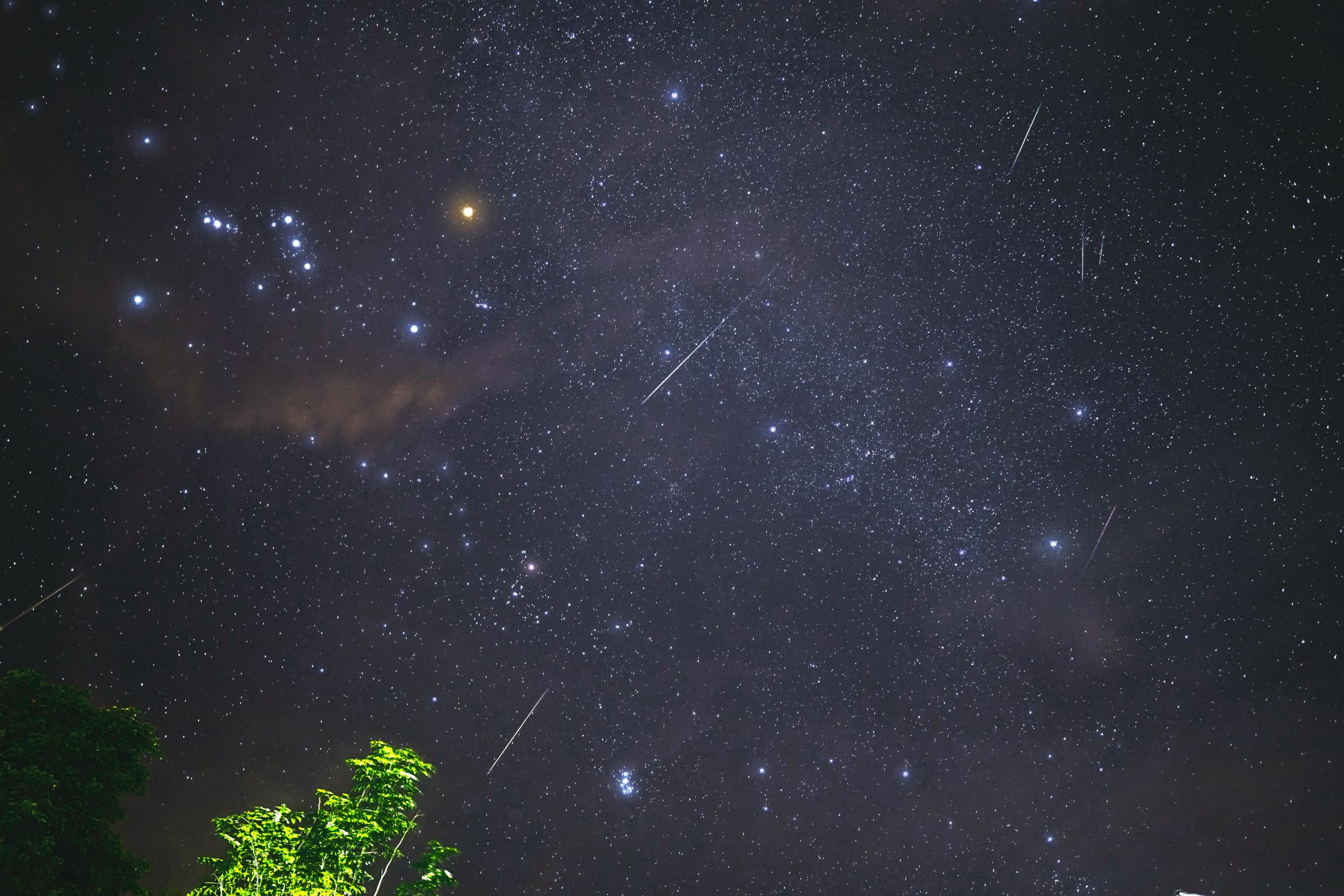Meteor Showers: A Celestial Spectacle for Skygazers
Meteor showers have been enchanting observers for centuries, and they remain a captivating natural phenomenon that never fails to inspire awe. These dazzling displays occur when streams of tiny dust and debris from comets or asteroids enter Earth’s atmosphere, igniting and streaking across the night sky like celestial fireworks.
For audiences in the United States, there are several meteor showers that offer a breathtaking show. Let’s explore the best meteor showers to catch in the USA:
- The Perseids (August): The Perseids are a spectacular and dependable meteor shower, known for producing up to 60–100 meteors per hour at their peak. The best time to witness this show is during the late evening and early morning hours of mid-August.
- The Geminids (December): Another exceptional meteor shower, the Geminids can produce up to an impressive 120 meteors per hour at their peak. Set your alarm for the early morning hours of mid-December for the best viewing experience.
- The Quadrantids (January): While relatively short-lived, the Quadrantids make up for it with their intensity, offering up to 40–200 meteors per hour during their peak in the early morning hours of early January.
- The Orionids (October): The Orionids provide a moderate meteor shower, with up to 20–50 meteors per hour at their peak. You can catch them in the late evening and early morning hours of mid-October.
- The Taurids (October–November): The Taurids are a bit more complex, featuring two distinct branches: the Southern Taurids, best viewed in late October’s late evening hours, and the Northern Taurids, which shine in the early morning hours of early November.
Besides these major meteor showers, there are numerous minor meteor showers throughout the year, which may not be as prolific but can still offer an enjoyable stargazing experience.
Latest Insights on Meteor Showers
Recent scientific research has unveiled some fascinating facts about meteor showers. For instance, the Perseid meteor shower is now understood to be generated by two separate streams of debris from Comet Swift-Tuttle. The first stream is responsible for the early part of the shower, while the second stream produces the later Perseids.
Scientists have also discovered that the Geminid meteor shower originates from debris shed by a small asteroid called 3200 Phaethon. This asteroid’s eccentric orbit, which brings it remarkably close to the Sun, leads to the release of debris that creates the stunning Geminid meteor shower.

Photo by ARMAN ALCORDO JR.: https://www.pexels.com/photo/space-dark-dust-telescope-8390734/
Tips for Optimal Meteor Shower Viewing
To make the most of your meteor shower experience, follow these tips:
- Seek out a dark location far from city lights to minimize light pollution.
- Lie on your back, allowing your eyes to adjust to the darkness, which may take a few minutes.
- Once your eyes have adapted, you’ll be treated to meteors streaking across the sky.
If you’re interested in photographing a meteor shower, use a camera with a long exposure time, starting at around 30 seconds, and consider a wide-angle lens to capture more of the night sky.
Meteor showers are an exquisite way to connect with the beauty of the cosmos. So, the next time a meteor shower graces the night sky, make it a point to step outside and relish the celestial display!

